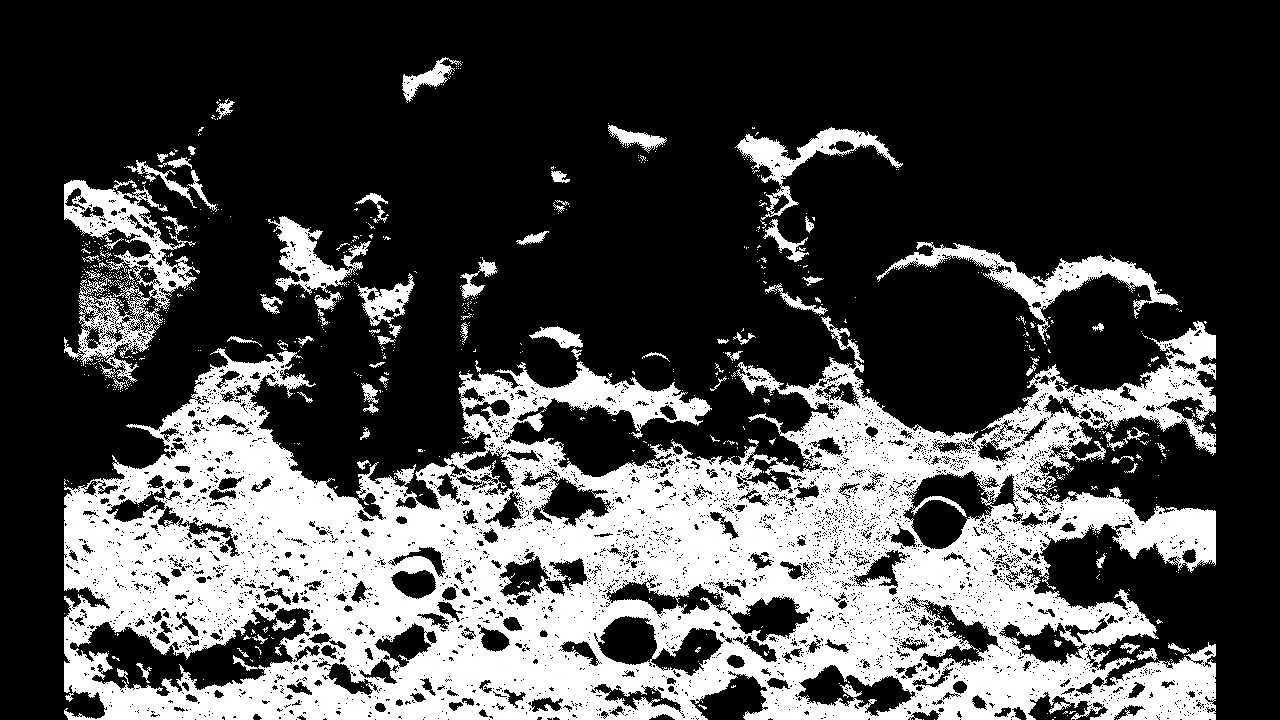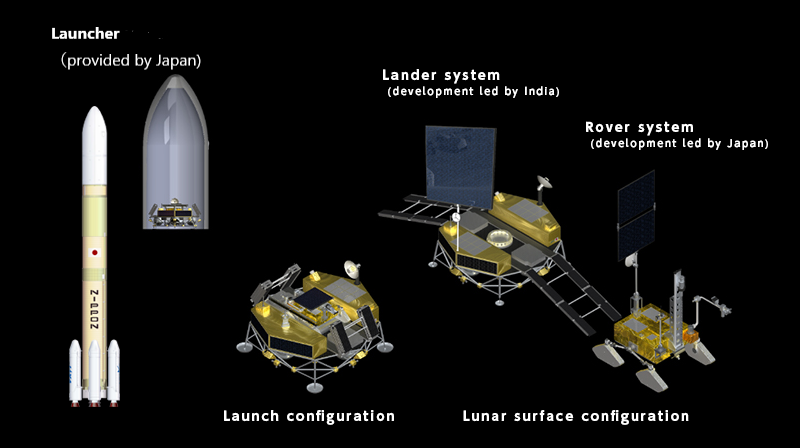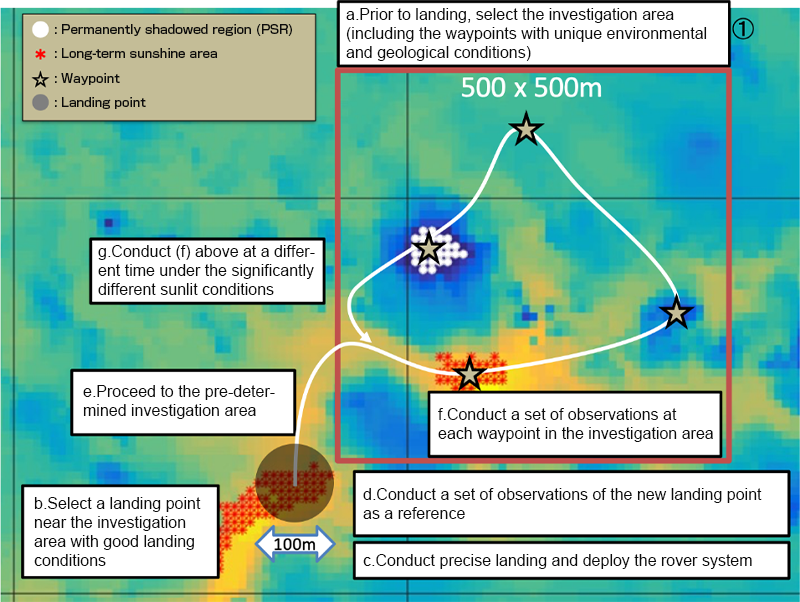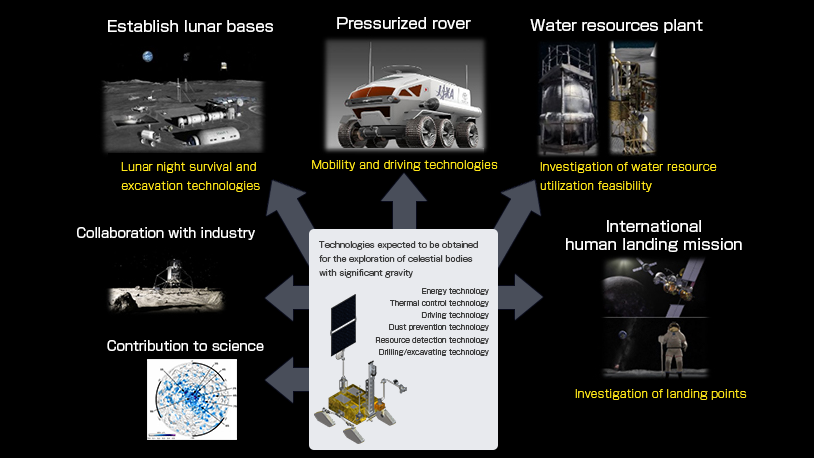
In the last few years, the analysis of observational data has suggested the existence of water in the polar regions of the Moon. JAXA is working with ISRO to plan an international collaborative mission to obtain the data on the quantity and forms of the water resources present on the Moon, in order to determine the feasibility of utilizing such resources for sustainable space exploration activities in the future.
- Quantity: Our aim is to obtain actual data (ground truth data) regarding the quantity of water (H₂O) from in-situ observations of areas where water is anticipated to exist, based on the available past observational data.
- Quality: We aim to understand the distribution, conditions, form and other parameters of the lunar water resources through in-situ observations in the polar regions of the Moon.
Through this mission, we also seek to improve the technology needed to explore the surface of low-gravity celestial bodies in order to support future lunar activities. These advancements include technology for mobility, lunar night survival and mining excavation.
Water Distribution on the Moon

At the lunar north and south poles where the Sun angle is low, there exist so-called ‘permanently shadowed regions’ (PSRs) that do not receive sunlight for long periods of time. As example of a PSR would be an area that is lower than the surrounding ground, such as the inside of a crater.
Recent observational data suggests that it is highly likely that water does not sublimate at such locations, and remains near the lunar surface. However, the details about the water quantity, distribution and its form are still a mystery.
Lunar Polar Exploration Mission Overview

The Lunar Polar Exploration mission will confirm not only the presence of water, but investigate the quantity, distribution on the lunar surface and below ground, and the form the water exists in, such as the level of mixing with dry regolith (small particles).
A further objective is to gain insight into how water on the lunar surface evolved to its present state through acquiring knowledge on the Moon’s environment. Understanding how water is retained by planetary bodies is important for the prospect of future human exploration beyond the Earth.
| Launch Year | 2025 |
|---|---|
| Launch Vehicle | H3 Rocket |
| Orbit | KAGUYA Launch orbit (being coordinated) |
| Launch Mass | Around 6 tons or more |
| Payload Mass | Above 350 kg (including a rover) |
| Operating Period | More than 3 months |
| Landing Point | South pole region of the Moon |
| Major Mission Instruments 【Responsible Organization】 |
●【JAXA】Resource Investigation Water Analyzer(REIWA) REIWA consists of the following equipment: - 【JAXA】Lunar Thermogravimetric Analyzer(LTGA) - 【JAXA】Triple Reflection Reflectron(TRITON) - 【JAXA】Aquatic Detector using Optical Resonance(ADORE) - 【ISRO】Sample Analysis Package(ISAP) ●【JAXA】Advanced Lunar Imaging Spectrometer(ALIS) ●【NASA】Neuron Spectrometer(NS) ●【ISRO】Ground Penetrating Radar(GPR) ●【ESA】Exospheric Mass Spectrometer for LUPEX(EMS-L) ●【ISRO】Mid-Infrared Imaging Spectrometer |
Investigation Sequence

The investigation area and observation points (waypoints) with unique environmental and geological conditions will be selected prior to landing. The lander will land at a location near the investigation area that has long sunlit hours, and deploy the rover.
During operation, the rover will observe up to 1.5m underground, allowing the detection of possible water resources in the area. The rover will simultaneously observe the Moon surface.
The rover will be equipped to conduct observations of the chemical elements present in areas where water may possibly be distributed. If hydrogen is detected, the rover will mine the surface to collect samples. The sample will then be heated to vaporize the volatile substances in order to determine the chemical composition, analyze the quantity of water and conduct isotopic analysis.
Expected Results of Lunar Polar Exploration Mission

Resource exploration: By obtaining key data on lunar water resources, including quantity and location, a judgement can be made regarding the feasibility of the Moon’s water for utilization during sustainable space exploration missions in the future.
Technological development: Develop autonomous exploration capabilities on celestial bodies with significant gravity through utilizing and furthering the landing technology gained through the SLIM project, and by demonstrating surface investigation technology.
Global: Working as part of an international collaboration allows the mission design and development to be informed through global expertise, maximizing the scientific and technological impact for the future of human exploration.
History
In January 2020, JAXA established the “Lunar Polar Exploration Pre-Project Team” to achieve the following goals:
- Develop a comprehensive management plan for the collaborative mission with ISRO.
- Investigate the spacecraft system requirements and the various interface specifications in collaboration with ISRO.
- Clarifying the rover system requirements in preparation for the System Requirements Review (SRR).
- Clarifying the development specifications for the observational instruments to be developed by JAXA.
- Concept design for the Lunar Polar Explorer system and related systems.
- Investigation of the landing point.
Information about JAXA’s previous lunar mission, SELENE, can be found here:http://www.kaguya.jaxa.jp/index_e.htm
